Pocket watch chains carry a legacy of elegance and tradition. From classic styles to modern wear tips, this guide highlights their history, types, and how to wear them right.
You’ve seen them in old portraits or vintage films: a glint of metal from a waistcoat, a chain leading to a pocket.
That’s a pocket watch chain, once a mark of punctuality and polish. These chains first appeared in the 17th century when pocket watches became common among the upper class.
By the 19th century, they were worn by everyone from British aristocrats to American railroad workers.
The chain wasn’t just decoration. It kept the watch safe, within reach, and often said something about the wearer’s taste or status.
Today, they’re back in style, blending historical character with personal flair.
Whether you’re into vintage fashion, collecting, or want to wear one with confidence, understanding the types, materials, and how to wear them makes all the difference.
Let’s look at what matters most.
Table of Contents
- What is a Pocket Watch Chain?
- Components of a Pocket Watch Chain
- Common Materials for Pocket Watch Chain
- Types of Pocket Watch Chains
- Vintage Pocket Watch Chains
- Pocket Watch Chains and Fobs
- How Do You Wear Pocket Watch Chains?
- Final Tips for Choosing and Styling a Pocket Watch Chain
- Frequently Asked Questions
- Conclusion
What is a Pocket Watch Chain?
A pocket watch chain connects your pocket watch to your clothing, usually through a vest, belt loop, or waistcoat. It keeps the watch safe and adds visual interest to your outfit.
Some are sleek and minimal, while others carry extra details like a fob or a double strand.
You’ll find them in antique shops, modern boutiques, or passed down through family.
The style you choose can say a lot about your personality, polished and classic, or bold and vintage.
Whether you’re using it for fashion or function, understanding the chain’s purpose and structure makes wearing one feel natural instead of forced.
Components of a Pocket Watch Chain
Each part of a pocket watch chain serves a dual purpose, both in function and appearance.
Knowing what they do helps you wear one with confidence and intention.
Chain
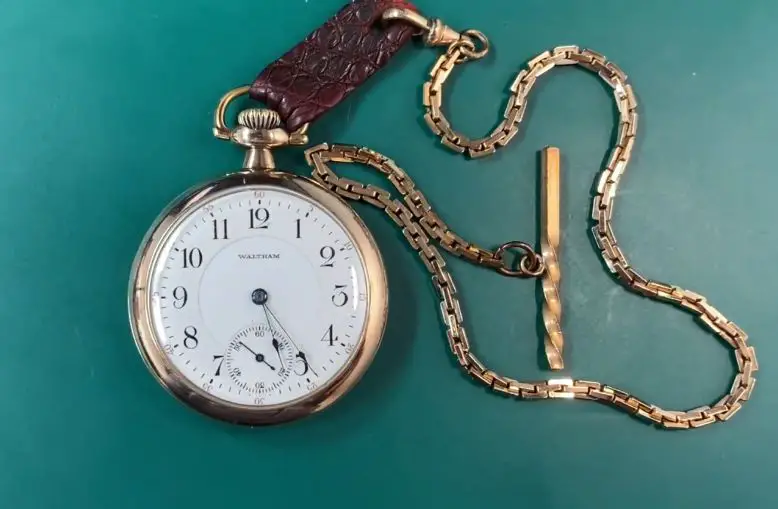
The chain is the main feature of your pocket watch setup. It links your watch to your clothing and determines the overall feel of the accessory.
Chains vary in thickness, length, and link style, from tight curb chains to more open, decorative ones.
The right style depends on your outfit and the impression you want to make.
A fine gold chain may feel refined and formal, while a thicker brass link can lean rugged and casual.
Clip or Bar
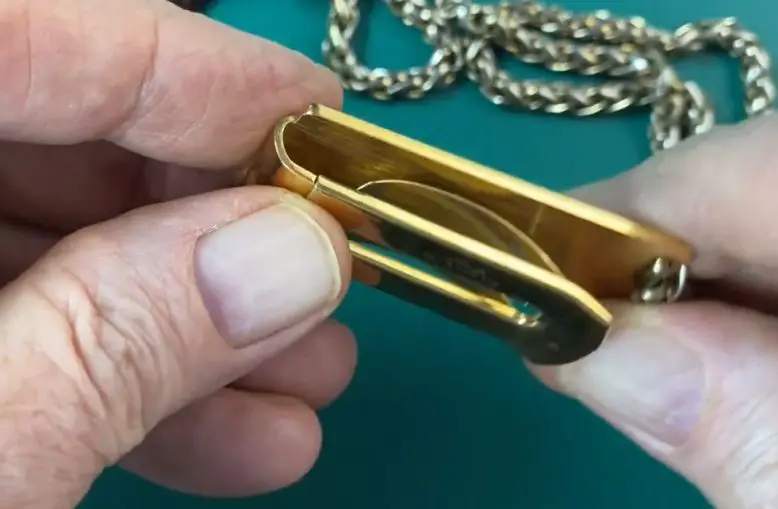
This piece attaches the chain securely to your clothing. Some chains come with a spring-loaded clip for fastening to a belt loop or trouser pocket.
Others use a straight bar that slips behind a button or waistband. The attachment you choose should match how and where you wear your watch.
If you’re wearing a waistcoat, a bar might look cleaner. If you’re going for practical use with jeans, a clip offers ease and grip.
T-Bar
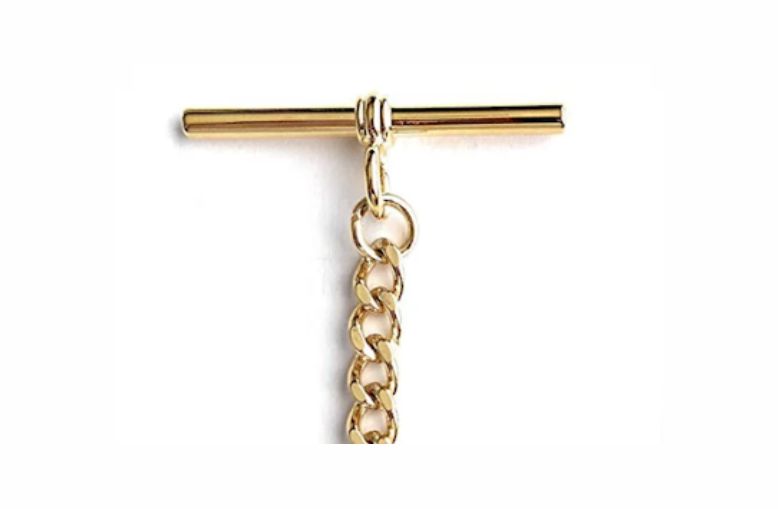
The T-bar is a traditional fastener used mostly with waistcoats or suit vests. Shaped like the letter T, it threads through a buttonhole and stays in place horizontally.
It provides a clean and polished look without the bulk of clips.
The T-bar is ubiquitous in double Albert chains, where it serves as the center anchor with chains running to both sides.
It’s a favorite for formalwear or vintage-styled outfits that call for precise, intentional detailing.
Fob

The fob is a small ornament or functional charm attached to the other end of the chain.
Some are decorative, like crests, coins, or initials, while others serve a use, such as miniature tools or seal stamps.
Fobs were once used to weigh the chain or reflect family heritage.
Today, they add a touch of character to your look. You can choose one that matches your watch’s era, tells a story, or adds a surprising twist to modern outfits.
Related Posts
- Guide to Men’s Watches: A Comprehensive Guide
- How to Wear a Pocket Watch: A Gentleman’s Guide
- How to Shop a Pocket Watch: Vintage vs Modern
- Guide to Smart Watches for Men
- Field Watches for Men: Everything to Know
- Sports Watches for Men: A Quick Guide
Common Materials for Pocket Watch Chain
The material of your pocket watch chain shapes both its look and how it wears over time.
Here are the most common choices and what they bring to the table.
Gold
Gold chains are classic and carry a sense of old-world prestige.
They were popular among the wealthy and are often paired with heirloom watches or formal clothing.
The warm luster of gold suits black-tie events or vintage suits.
While beautiful, gold can be soft and may require more care to keep its shine intact.
Silver
Silver offers a cooler tone and a bit more flexibility in styling. It works well with both modern and antique watches.
You’ll see it in many Edwardian and Victorian pieces. It looks sharp without calling too much attention, making it a good match for business attire or evening wear.
Regular polishing helps keep silver looking its best.
Brass
Brass chains carry a worn-in, earthy charm. The golden-brown tone stands out without feeling flashy. Brass is a great match for casual outfits or steampunk looks.
It develops a patina over time, which can add character.
If you’re after something that feels grounded and not too polished, brass is a solid option.
Stainless Steel
Stainless steel chains are strong, clean, and made for daily use. They resist tarnish and don’t need much upkeep.
You can wear them in rain or shine without worry. The modern sheen pairs well with contemporary pocket watches and everyday outfits.
It’s a practical choice if you want style without the fuss.
Types of Pocket Watch Chains
Each type of pocket watch chain has its own history and suits a different kind of look or lifestyle.
Choosing the right one depends on how and where you plan to wear it.
Albert Chain
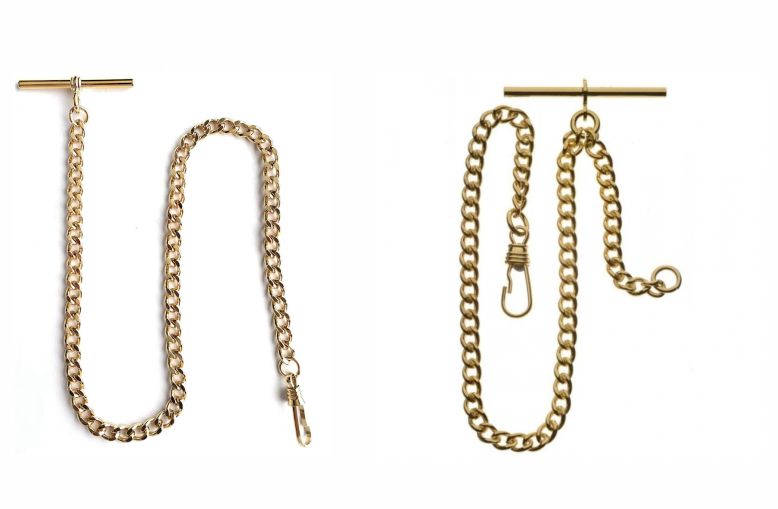
This style takes its name from Prince Albert and remains one of the most recognized pocket watch chains.
It comes in two forms: single, which connects your watch to your vest, and double, which uses a T-bar at the center with two chains branching off, one for the watch and the other for a fob.
The Albert chain is made to be seen. It’s best paired with a waistcoat and gives a refined, polished look that fits formal events or vintage fashion.
Belt Bar Chain
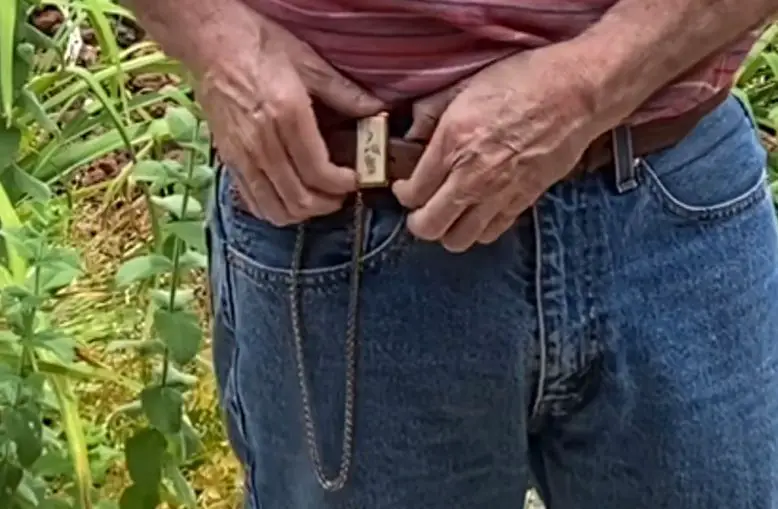
This is a simple and functional choice that attaches to your belt loop or waistband.
Originally popular among working men in the early 20th century, the belt bar chain was built for practicality.
It works well with trousers and jeans, especially if you’re aiming for a relaxed, slightly rugged appearance.
This style fits right into steampunk fashion or modern outfits that call back to heritage looks.
Bolt Ring Chain
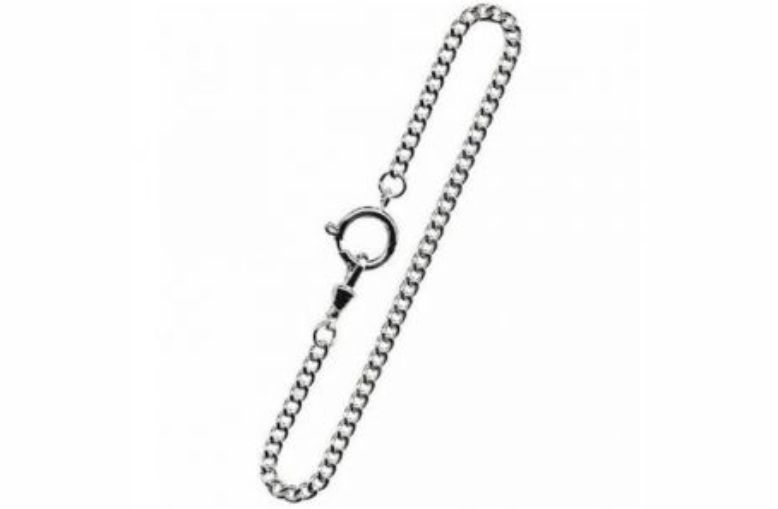
Known for its circular clasp, the bolt ring chain fastens securely to a buttonhole, loop, or pocket edge. It’s a flexible choice for daily use.
The clasp mechanism makes it quick to attach and remove, and it stays in place throughout the day.
If you want something easy to manage without giving up style, this one fits well with business casual or weekday looks.
Slide Chain
The slide chain is light, adjustable, and often more delicate than other types.
It has a movable piece that lets you control the length for a looser or snugger fit.
This chain is traditionally worn by women and works well with lighter garments like blouses or summer vests.
If you’re after something with a softer appearance and a comfortable fit, the slide chain is a good match.
T-Bar Chain

The T-bar chain is made for tailored vests and three-piece suits. It’s anchored by a horizontal bar that slips through a buttonhole and stays flat against the fabric.
This type is clean and sharp, helping the watch sit evenly in your pocket.
It’s most commonly used in formal or traditional settings where your outfit needs structure and balance.
The T-bar chain is a go-to for classic, dressed-up occasions.
Vintage Pocket Watch Chains
Vintage pocket watch chains carry stories from the past.
They come from distinct periods like Victorian, Edwardian, and Art Deco, each with its own style and level of detail.
These chains reflect the design trends and metalwork skills of their time, making them valuable for collectors and anyone who appreciates history.
Identifying Authentic Vintage Chains
To spot a genuine vintage chain, start by looking for hallmarks or maker’s marks.
These stamps show the metal’s purity and the manufacturer.
Signs of wear, such as softened edges or slight scratches, often indicate age and use.
Pay attention to the craftsmanship, hand-finished links, or delicate engravings usually point to an authentic piece rather than a modern reproduction.
Collecting and Care Tips
When you own a vintage chain, treat it with care. Store it in a soft pouch or fabric-lined box to avoid scratches.
Clean it using a soft cloth and steer clear of harsh chemicals that might damage the metal or finish.
If you’re buying vintage chains, check their authenticity through trusted dealers or appraisers to ensure you’re getting a true piece of history.
Pocket Watch Chains and Fobs
Fobs add character to your pocket watch chain. These small accessories hang from the chain and can be purely decorative or have a practical use.
Historically, fobs showed status or personal taste, with designs ranging from family crests to monogrammed medallions or even tools like cigar cutters and seals.
What Is a Fob?
As described in the previous section above, a fob is an ornament or useful item attached to the chain, usually hanging from the opposite pocket to the watch.
It’s meant to be seen and adds a touch of personality to your look.
The style of your chain affects fob placement. For example, double Albert chains typically have the fob in the second pocket, while single chains often keep it near the clip.
Styling with Fobs
When you wear a fob, it brings flair and balance to your outfit. It’s a small detail that draws attention and can reflect your history or interests.
Adding a fob lets you personalize your watch chain beyond just function.
How Do You Wear Pocket Watch Chains?
Wearing a pocket watch chain depends on your outfit and the look you want to achieve. Here are some common ways to style them.
With a Waistcoat or Vest
The traditional way to wear a pocket watch chain is by threading a T-bar through your vest’s buttonhole.
Place the watch in one pocket and the fob or accessory in the other.
Single Albert chains create a simple loop, while double Alberts drape across your chest, adding a refined touch perfect for formal events.
With Trousers or Jeans
For a more casual vibe, attach a belt bar or clip-on chain to your belt loop. Let the watch rest in your trouser or jean pocket.
This style works well with denim and steampunk looks, blending ruggedness with a neat finish.
With a Jacket or a Suit
When wearing a jacket or suit, tuck the chain inside your jacket for a clean, low-key style. The watch can sit in your vest or trouser pocket.
Add a small fob for a hint of personality without drawing too much attention.
Modern Interpretations
Today, you’ll see vintage chains mixed with modern fashion. Try a silver Albert chain with a slim blazer or a belt bar chain with tailored jeans.
Some wear chains alone as bold jewelry statements, leaving the watch behind for an edgy, contemporary look.
Final Tips for Choosing and Styling a Pocket Watch Chain
Choosing the right pocket watch chain enhances your style and functionality. Consider metal, size, and care to create a polished, timeless look that suits any occasion.
Match Metal Tones
Coordinate the chain’s metal, whether gold, silver, or another finish, with your watch and outfit accents like cufflinks, belt buckles, or tie clips. This creates a cohesive, elegant appearance and ensures your accessories complement each other seamlessly.
Consider Length and Thickness
Shorter, thicker chains tend to suit casual or everyday styles, adding a bold touch.
Longer, finer chains are ideal for formalwear, offering a subtle, sophisticated accent that enhances the overall look without overpowering it.
Maintenance
Proper care extends the life of your pocket watch chain. Store it flat or coiled to prevent tangling and clean gently with mild soap and water.
Always dry thoroughly to avoid rust or tarnish, keeping your chain looking pristine.
Frequently Asked Questions
What is the purpose of a pocket watch chain?
It secures the watch to clothing, preventing loss while adding style, often reflecting the wearer’s taste and status.
What materials are commonly used for pocket watch chains?
Gold, silver, brass, and stainless steel are popular, each offering distinct looks and varying durability.
How do I wear a pocket watch chain with a waistcoat?
Thread the T-bar through a buttonhole, place the watch in one pocket, and the fob or accessory in the other for a polished look.
What styles of pocket watch chains suit casual outfits?
Belt bar and bolt ring chains work well with jeans or casual trousers, providing a rugged yet stylish appearance.
Conclusion
Pocket watch chains blend history, craftsmanship, and fashion into one timeless accessory.
From elegant gold Alberts worn at formal events to sturdy brass chains paired with casual attire, these chains offer versatile styling options.
Understanding the types, materials, and how to wear them allows you to express personal flair while honoring tradition.
Whether collecting vintage pieces or embracing modern adaptations, a well-chosen pocket watch chain adds character and polish to any outfit.
With proper care and thoughtful coordination, this classic accessory remains relevant today, bridging the gap between past elegance and contemporary style effortlessly.
Pyo Merez is a men’s lifestyle enthusiast and writer about the gentleman’s place and impact on society. Raised by a distinguished gentleman dad, he offers unique insights into how the mind of a gentleman works and how societal norms shape gentlemen’s identity and vice versa.
Through his insightful articles, Pyo taps into the depths of gentleman culture to provide perspectives on etiquette and manners in modern society.
